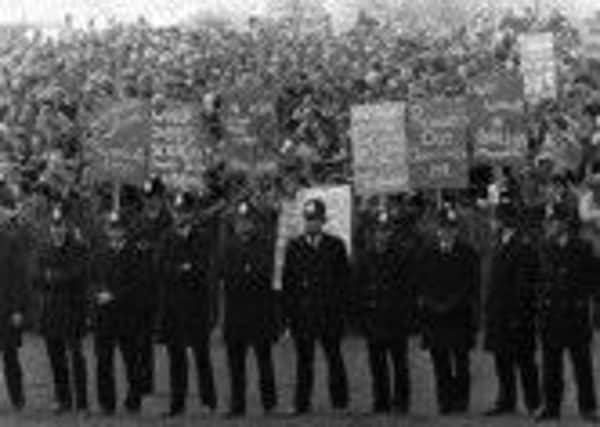Newly released cabinet papers ‘prove us right’ over miners’ strike says Nottinghamshire NUM spokesman


The strike started 30 years ago in March and lasted a year with sometimes violent confrontation between police and pickets.
The government and National Coal Board said at the time they wanted to close 20 pits but previously confidential files released today by the National Archives reveal a plan to shut 75 mines over three years.
Advertisement
Hide AdAdvertisement
Hide AdAlan Spencer, general secretary of the Mansfield-based Nottinghamshire area branch of the National Union of Mineworkers, said: “The papers show what we said was happening all along and if the public had got to know of these facts at the time then I think we would have had a bit more public support which might have saved some pits. The strike was never about money, it was about saving jobs and this proves exactly that.”
He added: “It is going to take some time for everything to come out, probably a few more years, but the truth is starting to emerge which proves us right and is what we’ve been fighting for for many years.”
The relevant document records a meeting attended by just seven people, including then Prime Minister Margaret Thatcher.
The meeting was told the National Coal Board’s pit closure programme had “gone better this year than planned: there had been one pit closed every three weeks” and the workforce had shrunk by 10 per cent.
Advertisement
Hide AdAdvertisement
Hide AdThe paper then refers to the board’s new chairman Ian MacGregor’s intentions.
“Mr MacGregor had it in mind over the three years 1983-85 that a further 75 pits would be closed... There should be no closure list, but a pit-by-pit procedure”
“The manpower at the end of that time in the industry would be down to 138,000 from its current level of 202,000.”
The final paragraph of the document read: “It was agreed that no record of this meeting should be circulated.” while the paper was marked “Not to be photocopied or circulated outside the private office”,
Advertisement
Hide AdAdvertisement
Hide AdPapers have also revealed that the government considered calling a state of emergency and getting troops to move coal.
The union is planning a commemorative event in Kirkby to mark the anniversary of the start of the strike. Former miners and their supporters will gather at the town’s Festival Hall on April 12th to hear guest speakers.
Mr Spencer said before the strike there were 36 pits in Nottinghamshire with a workforce of around 36,000. Today only one mine - Thorseby - remains in operation with around 700 staff.
He said: “You’ve only go to look around to see what has happened to the area since 1984, it’s not just the mines that have closed, it’s textile factories and other industries, the area has been desimated.”
Advertisement
Hide AdAdvertisement
Hide AdNo-one has yet been available for comment at the Nottinghamshire headquarters of the Union of Democratic Mineworkers which was formed in 1985 by Nottinghamshire and Derbyshire miners after a split with the NUM during the strike.
What are your memories of the miners’ strike? The Chad wants to hear from you. Email [email protected] or visit our Facebook page www.facebook.com/mansfieldchad